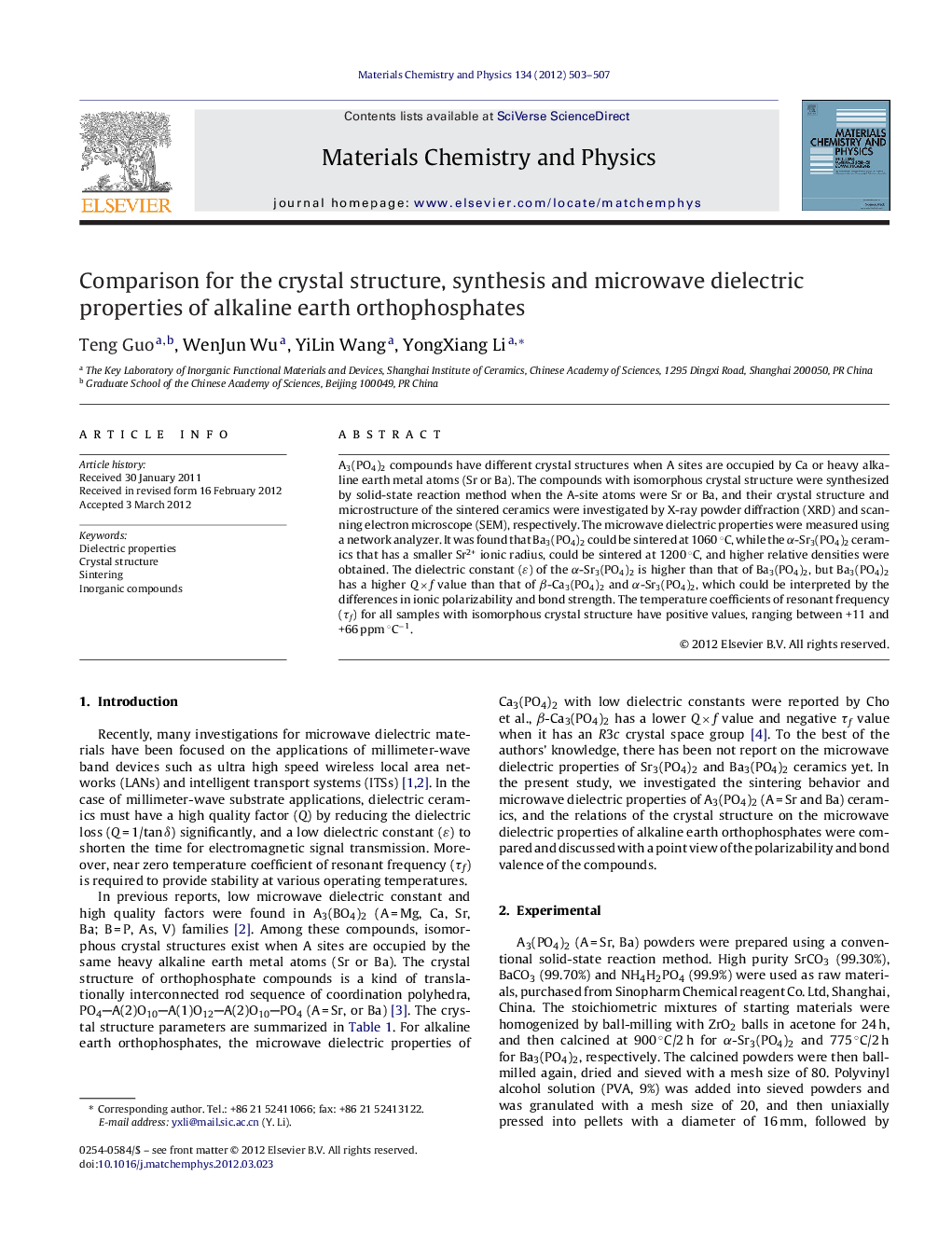| Article ID | Journal | Published Year | Pages | File Type |
|---|---|---|---|---|
| 1524046 | Materials Chemistry and Physics | 2012 | 5 Pages |
A3(PO4)2 compounds have different crystal structures when A sites are occupied by Ca or heavy alkaline earth metal atoms (Sr or Ba). The compounds with isomorphous crystal structure were synthesized by solid-state reaction method when the A-site atoms were Sr or Ba, and their crystal structure and microstructure of the sintered ceramics were investigated by X-ray powder diffraction (XRD) and scanning electron microscope (SEM), respectively. The microwave dielectric properties were measured using a network analyzer. It was found that Ba3(PO4)2 could be sintered at 1060 °C, while the α-Sr3(PO4)2 ceramics that has a smaller Sr2+ ionic radius, could be sintered at 1200 °C, and higher relative densities were obtained. The dielectric constant (ɛ) of the α-Sr3(PO4)2 is higher than that of Ba3(PO4)2, but Ba3(PO4)2 has a higher Q × f value than that of β-Ca3(PO4)2 and α-Sr3(PO4)2, which could be interpreted by the differences in ionic polarizability and bond strength. The temperature coefficients of resonant frequency (τf) for all samples with isomorphous crystal structure have positive values, ranging between +11 and +66 ppm °C−1.
► Two compounds with isomorphous crystal structure (α-Sr3(PO4)2 and Ba3(PO4)2) ceramics were synthesized. The new microwave dielectric properties were reported for the first time. ► The crystal structure and microwave dielectric properties of A3(PO4)2 (A = Ca, Sr, Ba) were compared and discussed systematically. ► Theoretical analysis was carried out with crystal structure and chemical bond characters.
